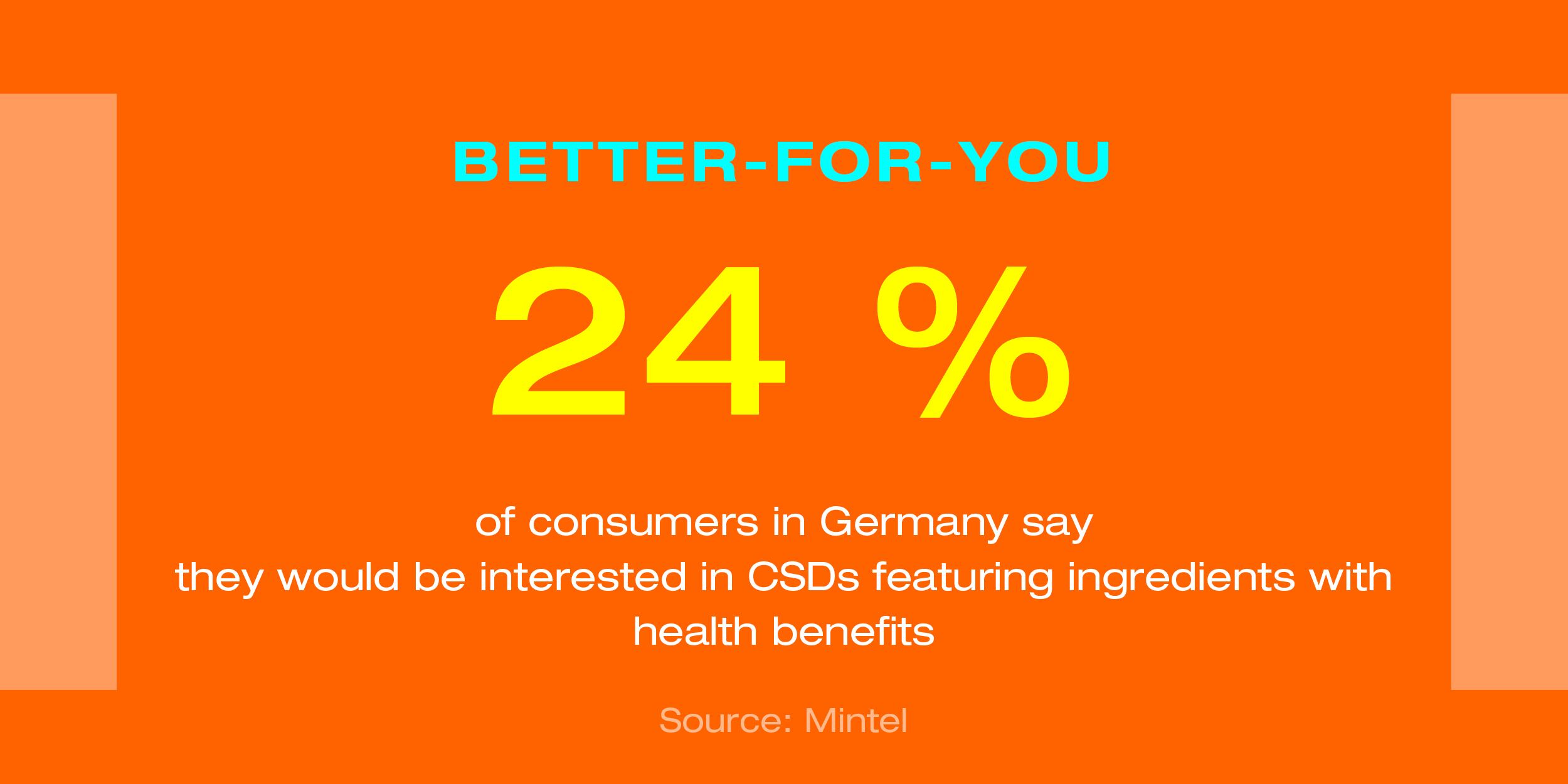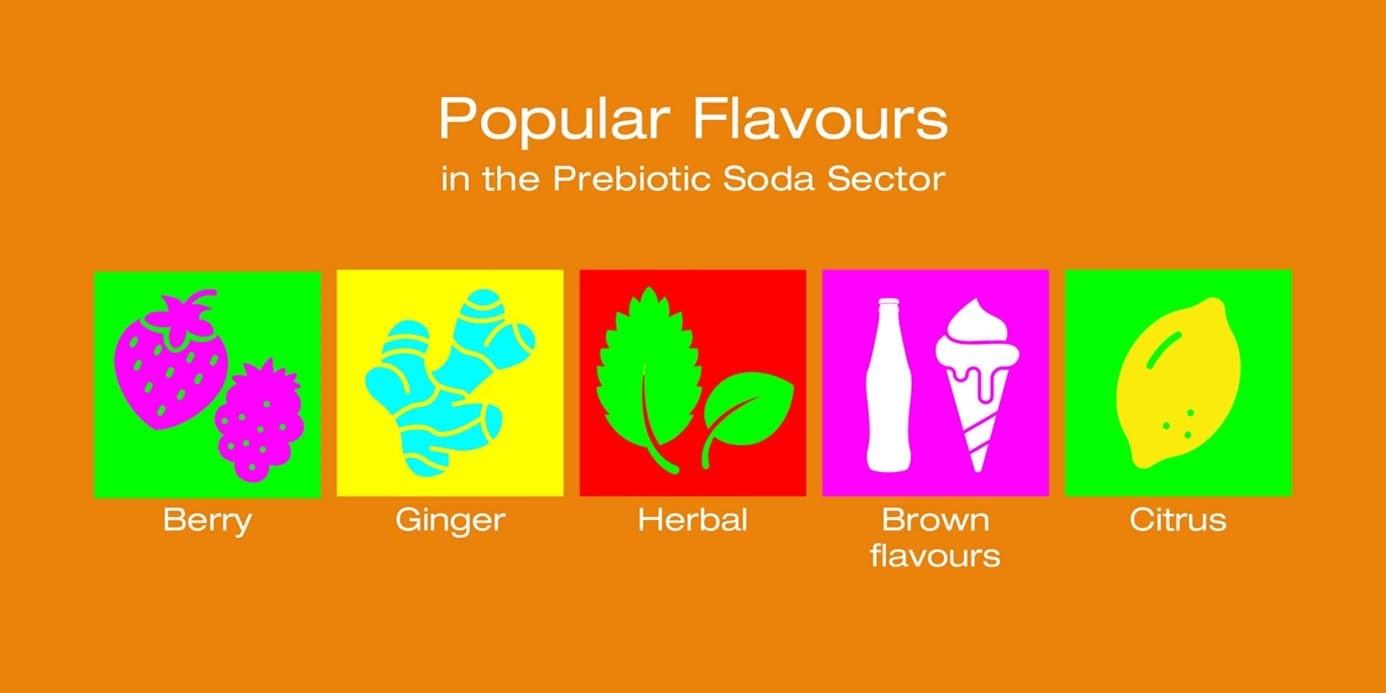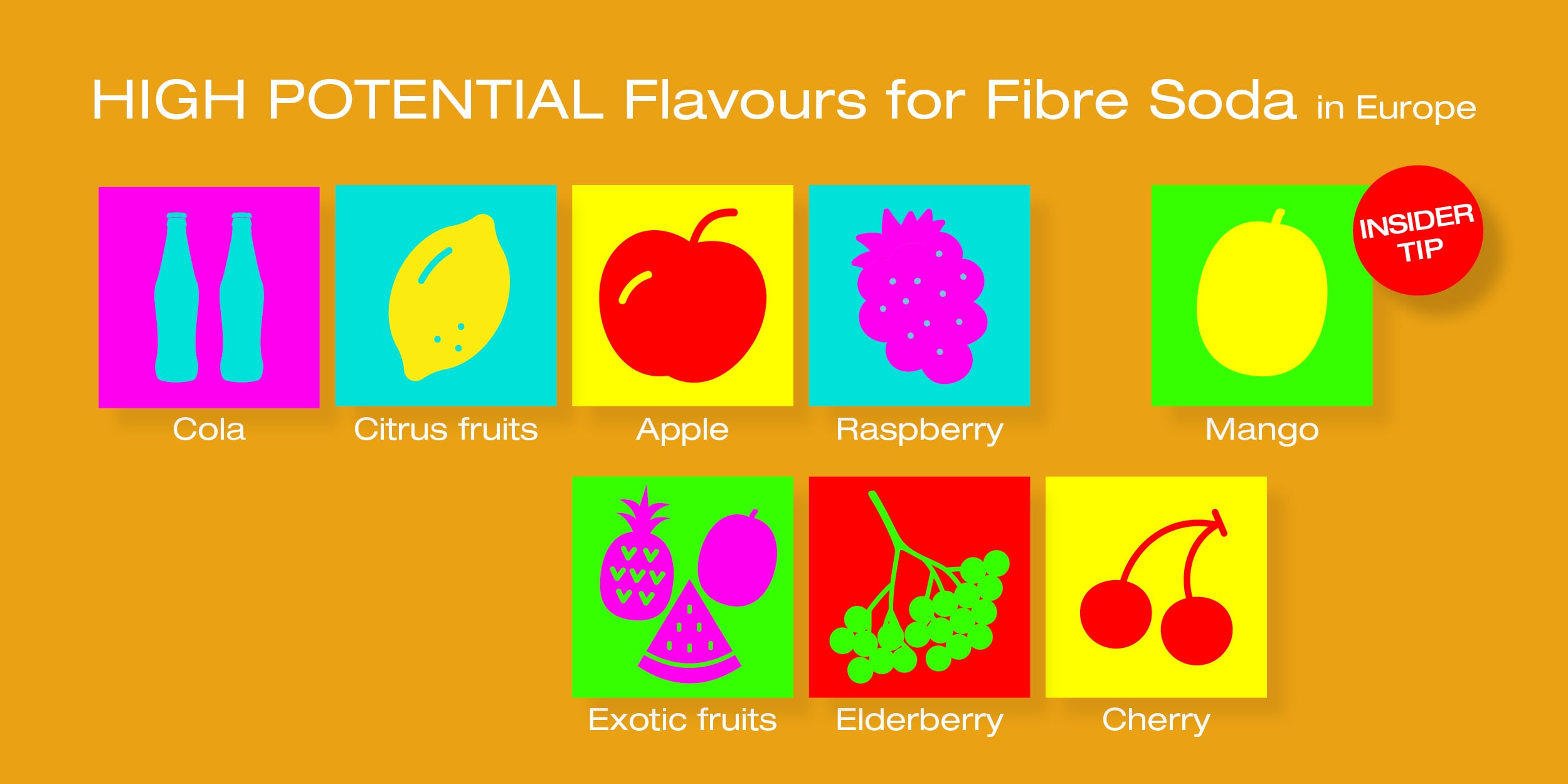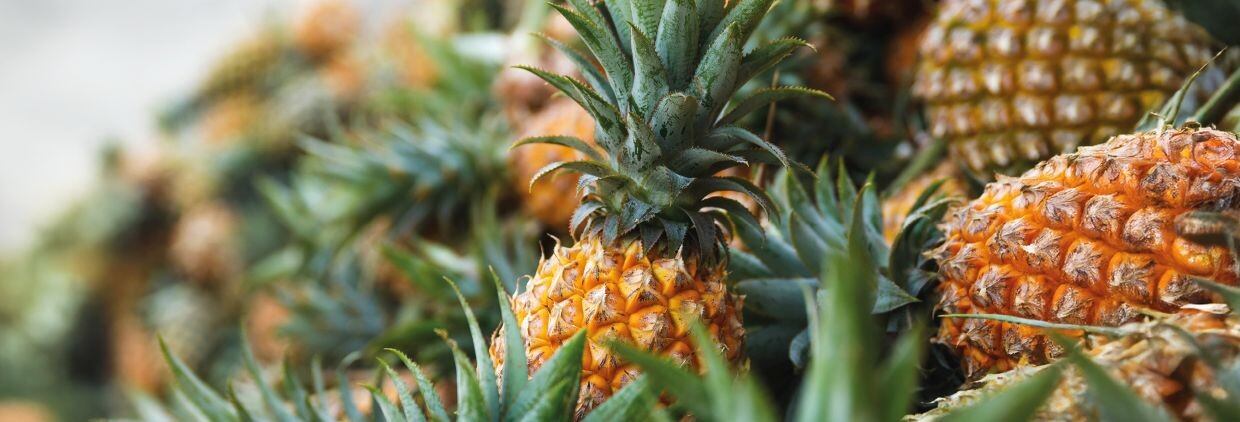Prebiotic sodas are emerging as a notable trend in North America and these functional beverages are expected to make an impact across Europe.
In recent years, the beverage industry has seen a surge in the popularity of functional drinks. Specifically prebiotic sodas that not only provide health benefits by promoting gut health, but also refreshing ‘bubbly’ flavors.
Prebiotic sodas are carbonated beverages that contain prebiotics – non-digestible fibres that serve as food for beneficial gut bacteria. Prebiotics are defined as ‘a substrate that is selectively utilized by host microorganisms conferring a health benefit’.¹
Unlike probiotics, which introduce live bacteria into the digestive system, prebiotics can support the growth and activity of existing beneficial bacteria. This can lead to improved digestion and enhanced colonic bacterial fermentation to reduce gut transit time and improved blood sugar regulation.
Prebiotics are typically derived from ingredients like chicory root, Jerusalem artichoke, and various fibres found in fruits and vegetables.
Functional food and beverage market
Consumers are increasingly adopting a holistic approach to health, seeking functional foods and beverages that provide health benefits. Prebiotic sodas are seen as a convenient way to incorporate prebiotics into the diet, supporting not only digestion but also immune function and overall wellbeing.
The market for probiotic and prebiotic sodas is expanding rapidly and data shows the trend is not just located in North America. In the US, the pro- and prebiotic soda market revenue is expected to increase in value from $171.6m to $268m between 2025 and 2030.
From a global perspective, the value-based CAGR for the digestive health drinks market outlook is defined at 6.1% between 2022 and 2032.In terms of global revenues, prebiotic sodas are said to grow at a CAGR of 7.9% from 2024 to 2030.
Currently, North America is a significant contributor to the prebiotic soda market. However, Southeast Asia already has a history of fibre-rich sodas, such as Coca-Cola Plus with dextrin, a prebiotic dietary fibre.²
The UK appears to be another growing market where there is an increasing number of product launches with gut health claims. The European market, in general, is expected to see significant growth due to the increasing health consciousness among consumers.²

Within the canned carbonated soft drinks (CSD) launches with better-for-you claims in the last five years in Europe, vitamin/mineral claims have seen the strongest growth, representing 7% of launches. Though still niche, the high fibre claim has surged in the past 12 months representing 2% of launches.²
Popular flavors in the prebiotic soda sector
Flavor is key. And flavor innovation is crucial in the beverage industry, as consumers seek both health benefits and enjoyable taste experiences.

Some of the most popular flavors for prebiotic sodas globally include:³
- Berry Wild berry, raspberry, and strawberry flavors are popular for their sweet and slightly tart taste
- Ginger Ginger-flavored sodas are appreciated for their spicy kick and digestive benefits (such as ginger-lemon or ginger ale)
- Herbal Flavors like mint, basil, and lavender offer a unique and sophisticated taste
- Brown flavors Cola, Vanilla and cream are mostly seen in a tasty combination like cherry vanilla or banana cream
- Citrus Lemon, lime, and orange flavors are the all-time favorites due to their refreshing and tangy profiles

Flavors for the European market
As the European prebiotic soda market continues to grow slowly, there is potential for exciting prebiotic sodas to gain popularity. According to Mintel’s ‘Flavourscape AI’ the following flavors could resonate well with European consumers:
Cola and citrus fruits In the category of flavored water and carbonated soft drinks, cola and citrus fruits are predominant. Apple and raspberry can also resonate perfectly with fibre sodas requirements.
Exotic flavors Mango, pineapple, passionfruit, and melon are the hot tips in the beverage industry this year
Elderflower Known for its delicate and floral notes, elderflower is a traditional flavor that could appeal to those seeking a light and refreshing drink
Cherry With its fruity and sweet profile, it could become a favorite among those looking for a unique and nostalgic taste

Market trends and consumer preferences
The sustained growth of the prebiotic soda market reflects the boom in consumer awareness of the health benefits associated with prebiotic ingredients and the augmented demand for functional foods and beverages that promote gut health.
As global consumers increasingly prioritize wellbeing, the prebiotic market is expected to expand to Europe, substantially propelled by innovation, product diversification, and broadening of distribution channels.
However, it’s important to know that gut-health soda is not a copy-and-paste solution from the US to global markets: compared to the EU market, US regulations are significantly different when it comes to labelling and product claims. In the EU, there is a list of permitted health claims – brands need to stick to this list and also follow a particular wording.
Specifically, the claims ‘probiotics/prebiotics’ – when used in relation to foods – are not included in the EU list of permitted health claims and therefore cannot be used.⁴
Nevertheless, making prebiotic soda popular in the EU is definitely achievable: by simply referring to them as ‘fibre soda’ and providing information about the beneficial nutritional properties, for example ‘high fibre’.
Just as global health awareness and interest towards gut health is continuously growing, social media platforms are filled with trending hashtags like #GuTok or #bloating driving even more interest for prebiotic or fibre soda – #GuTokreached over a billion views in January 2025.⁴
Future of prebiotic sodas
Creating a fibre soda that meets European product expectations involves understanding the unique preferences of the market while leveraging the global trends in functional beverages. By focusing on innovative and appealing flavors, beverage companies can tap into the growing demand for healthier and more enjoyable drink options. The future of prebiotic sodas looks promising, with continued growth and diversification expected in the coming years.
If you are interested in tasting fibre soda concepts made in the EU, join esarom at its booth at drinktec in September in Munich in the New Beverage Concepts Area.
References
- Gibson, G.R.; et al. Expert consensus document: The International Scientific Association for Probiotics and Prebiotics (ISAPP) consensus statement on the definition and scope of prebiotics. Nat Rev Gastroenterol Hepatol. 2017 Aug;14(8):491-502.
- Mintel.
- European Commission. Food and Feed Information Portal Database.
- WholeFoods. #GutTok & Beyond.





